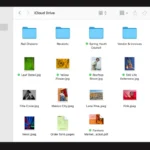Removing a CPU fan might seem daunting, but it’s a task you can handle with care and the right approach. To safely remove a CPU fan, first unplug its power connector, then gently twist the push pins or unscrew the mounting brackets holding it in place. This process varies slightly depending on your system, but these basic steps apply to most setups.
Before you start, it’s wise to run your computer for a few minutes. This warms up the thermal paste, making it easier to separate the fan from the CPU. Once you’ve unplugged the system, locate the fan connector on the motherboard and disconnect it. Next, identify how your fan is attached – it’s usually secured by push pins or screws.
For push pin designs, turn each pin 90 degrees counterclockwise. With screw mounts, simply unscrew them. Lift the fan straight up, using a gentle rocking motion if needed. Be patient and avoid forceful movements to prevent damage to your CPU.
| Fan Type | Removal Method | Tools Needed |
|---|---|---|
| Push Pin | Turn 90° counterclockwise | None or flathead screwdriver |
| Screw Mount | Unscrew | Phillips screwdriver |
| Clip-on | Release clips | None |
Tools and Preparation
Removing a CPU fan requires specific tools and safety measures. Proper preparation ensures a smooth process and protects your computer components.
Gathering the Right Tools
To safely remove your CPU cooling fan, you’ll need:
- A Phillips head screwdriver
- Isopropyl alcohol (90% or higher)
- Lint-free cloth or paper towels
- Anti-static wrist strap
- Thermal paste (for reapplication)
Keep these tools within reach. The screwdriver helps loosen mounting screws. Isopropyl alcohol cleans old thermal paste. An anti-static wrist strap prevents accidental damage from static electricity.
Safety Precautions
Before starting, take these steps:
- Shut down your computer completely
- Unplug the power supply unit (PSU)
- Press the power button to discharge residual electricity
Put on your anti-static wrist strap. Attach it to a metal part of the case. This grounds you and prevents static buildup.
Avoid touching sensitive components directly. Handle the CPU fan and heatsink by their edges. Don’t touch the thermal paste or CPU surface.
Preparing the Work Area
Set up a clean, well-lit workspace. Choose a flat surface with enough room for your computer and tools. Good lighting helps you see small components clearly.
Place an anti-static mat on your work surface if available. This provides extra protection against static discharge.
Open your computer case. Ensure you have clear access to the CPU area. Remove any cables or components blocking the fan.
| Tool | Purpose |
|---|---|
| Screwdriver | Loosen mounting screws |
| Isopropyl alcohol | Clean old thermal paste |
| Anti-static wrist strap | Prevent static damage |
| Lint-free cloth | Wipe surfaces clean |
Keep your workspace organized. Group your tools for easy access. Have a container ready for small screws. This prevents losing important parts during the removal process.
Removing the CPU Fan
Proper removal of the CPU fan is crucial for maintenance and upgrades. This process involves disconnecting cables, releasing attachments, and careful handling to avoid damage to components.
Disconnecting the Fan Connector
Locate the CPU fan header on your motherboard. It’s usually labeled “CPU_FAN” and found near the processor socket. Gently grasp the fan connector and wiggle it side to side while pulling upward. Don’t yank it straight out, as this may damage the pins.
If your fan has RGB lighting, you’ll need to unplug the RGB cable too. This connector is often smaller and located nearby. Use the same gentle technique to remove it.
Take care not to touch other components while working. Static electricity can harm sensitive parts.
Releasing Retention Clips or Screws
CPU fans are secured using either clips or screws. For clip-based designs, look for small levers or tabs at each corner of the fan assembly. Press these inward to release the fan.
If your fan uses screws, you’ll need a Phillips-head screwdriver. Loosen each screw in a diagonal pattern, making a few turns on each before fully removing them. This prevents uneven pressure on the CPU.
Keep track of any removed screws. A small magnetic dish can help prevent loss.
Carefully Detaching the Fan
With connections loose and fasteners released, it’s time to remove the fan. If it doesn’t lift off easily, the thermal paste may be acting like glue. Run your system for a few minutes to warm and soften the paste.
Hold the edges of the fan assembly and gently twist it back and forth. This helps break the seal without applying direct upward force on the CPU.
As the fan comes free, lift it straight up to avoid damaging the CPU or socket. Set it aside on a clean, flat surface.
| Fan Type | Removal Method | Tools Needed |
|---|---|---|
| Clip-on | Press tabs | None |
| Screwed | Unscrew | Screwdriver |
Remember to clean off old thermal paste from both the CPU and fan base before reinstalling or replacing the fan.
Handling the CPU
Proper CPU handling is crucial when removing or installing a fan. Care and precision protect delicate components from damage.
Removing the CPU Cooler from the Processor
To remove the CPU cooler safely:
- Run your system briefly to warm the thermal paste.
- Power off and unplug the computer.
- Locate the CPU fan connector on the motherboard and unplug it.
- For push-pin coolers, turn the pins 90 degrees counterclockwise to release.
- Gently twist the cooler side to side to break the thermal paste seal.
- Lift the cooler straight up to avoid bending pins.
For stubborn coolers, don’t force removal. Reboot briefly to rewarm the paste if needed.
Cleaning and Precautions
After removal:
- Clean old thermal paste from the CPU and cooler base with isopropyl alcohol and lint-free cloth.
- Inspect the cooler’s surface for damage or corrosion.
- Check CPU pins (AMD) or contacts (Intel) for bends or debris.
Precautions:
- Ground yourself to prevent static discharge.
- Handle the CPU by its edges only.
- Keep the CPU socket or pins clear of thermal paste.
Examining the CPU and Motherboard
Inspect these components closely:
- CPU surface for scratches or residue
- Motherboard socket for bent pins (Intel) or debris
- Mounting holes for any damage
| Component | What to Check |
|---|---|
| CPU | Surface condition, edge integrity |
| Socket | Pin alignment, cleanliness |
| Motherboard | Mounting holes, surrounding components |
Look for signs of overheating like discoloration on the CPU or socket area. Ensure the motherboard’s backplate is secure if your cooler uses one. If you spot any issues, address them before installing a new cooler.
Reinstallation and Testing
After removing the CPU fan, proper reinstallation is crucial for optimal cooling performance. Follow these steps to ensure your CPU fan is correctly reattached and functioning.
Applying Thermal Paste
Clean the CPU surface with isopropyl alcohol and a lint-free cloth. Apply a pea-sized dot of thermal paste to the center of the CPU lid. Don’t spread it manually – the cooler’s pressure will distribute it evenly.
High-quality thermal paste improves heat transfer between the CPU and cooler. Too much paste can hinder performance, so apply sparingly.
Some coolers come with pre-applied thermal paste. If yours does, skip this step to avoid over-application.
Securing the CPU Fan and Cooler
Align the cooler with the motherboard’s mounting holes. Lower it gently onto the CPU, ensuring even contact.
Secure the cooler:
- For push-pin coolers: Press down each pin until it clicks
- For screw-mounted coolers: Tighten screws in an X pattern
- For bracket mounts: Attach the bracket, then the cooler
Don’t overtighten – this can damage components. Aim for firm but not forceful pressure.
Double-check alignment and stability before proceeding.
Reconnecting and Powering On
Plug the CPU fan’s power connector into the motherboard’s CPU_FAN header. This ensures proper speed control and monitoring.
If you have an RGB cooler, reconnect its RGB cable to the appropriate header.
| Component | Connection Point |
|---|---|
| Fan Power | CPU_FAN header |
| RGB Cable | RGB header |
Close your case and reconnect the power supply. Boot up your system and enter the BIOS. Check CPU temperatures to verify proper cooling function.
Run a stress test for 10-15 minutes. Monitor temperatures to ensure they remain within safe limits. If temps are high or the fan isn’t spinning, recheck your installation.
Frequently Asked Questions
Removing CPU fans requires careful handling and specific techniques for different models and brands. These steps ensure safe detachment without damaging components.
What are the steps for safely detaching an AMD CPU fan from the motherboard?
Unplug the fan cable from the motherboard. Locate the retention lever near the socket. Gently lift the lever to release tension. Twist the cooler slightly to break the thermal paste seal. Lift the cooler straight up to avoid bending pins.
What is the correct procedure for removing an Intel CPU fan, especially for LGA 1700 sockets?
Turn the push pins counterclockwise to unlock them. You’ll hear a click when they’re loose. Gently wiggle each pin to ensure it’s free. Lift the cooler straight up. Clean off old thermal paste from both CPU and cooler.
How can one disassemble a Cooler Master CPU fan without damaging the components?
Disconnect the fan cable. Locate the mounting brackets or screws. Use the appropriate tool to loosen them. Gently twist the cooler to break the thermal paste bond. Lift it straight up.
What precautions should be taken when removing a Deepcool CPU fan?
Ensure your PC is off and unplugged. Ground yourself to prevent static discharge. Identify the mounting mechanism. Follow Deepcool’s specific instructions for your model. Avoid applying excessive force.
How can I remove a fan from a heatsink without causing damage to the CPU or cooler?
Run your system briefly to warm the thermal paste. This makes separation easier. Unscrew any retention screws. Gently twist the fan to break the seal. Pull straight up with steady pressure.
Is there a recommended method for disengaging a CPU fan that is mounted sideways?
Support the cooler’s weight as you work. Loosen mounting screws in a cross pattern. Gently rock the cooler side to side. Once loose, carefully slide it out horizontally. Be mindful of nearby components.
| Fan Type | Key Removal Steps |
|---|---|
| AMD | Lift retention lever, twist cooler |
| Intel LGA 1700 | Turn push pins, lift straight up |
| Cooler Master | Loosen brackets/screws, twist gently |
| Deepcool | Follow model-specific instructions |
| Side-mounted | Support weight, slide out horizontally |






